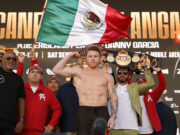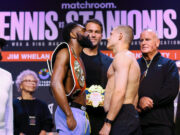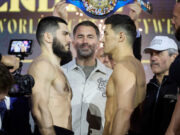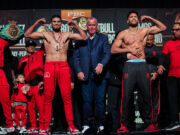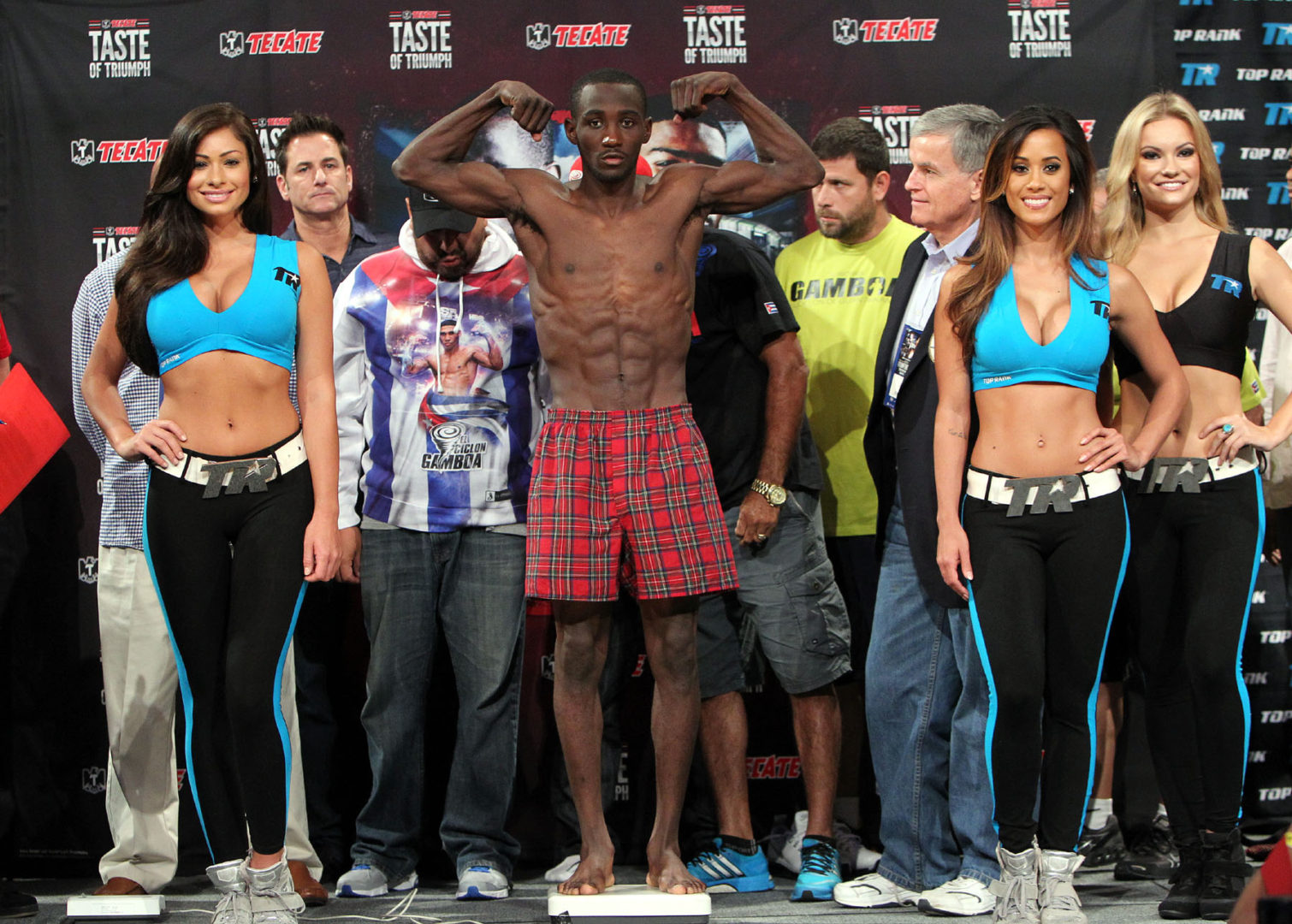By Bart Barry-
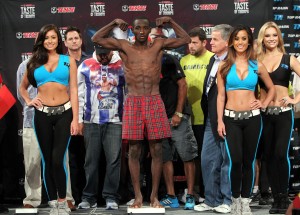
Saturday in New York City, undefeated Nebraska junior welterweight Terence “Bud” Crawford, an HBO fighter, put the sixth blemish on Philadelphian Hank Lundy’s ledger via TKO in round 5. Though Crawford’s assault did not take Lundy’s consciousness, it took his spirit, much as was anticipated by their records and all who watched. Crawford is aware there is an unseemly dearth of viable opponents for him, with the men who might’ve played challengers in bygone eras currently being overpaid by the PBC to behave like titlists, and he properly beats them to submission. If Crawford is not creating new aficionados, he is at least ensuring no more aficionados depart our sport on his watch.
Once televised boxing became predictable, we moved our commentaries to new subjects, and many concerned judges and their disagreeable tallies and referees and their improper stoppages, ever early or late, and point deductions, ever too much or too little, and if it isn’t an apt substitute for writing especially well about great spectacles, our unfortunate choice is partly palliated by the quality of the spectacles: It is no more possible to write greatly about a mediocre subject than stitch a great suit from burlap. Saturday’s match was not mediocre fabric, quite, it was in its punchcount and intent about good, though certainly not great, and what precluded its mediocrity, or eventual and desperately required salvation from mediocrity, was a choice its referee made in the closing moments of round 3.
Steve Willis, whose trademark enthusiasm is appearing ever more frequently during televised mainevents, chose not to act at the end of the third round, and it redeemed almost immediately a match that was strolling, and feinting and flexing, its way towards mediocrity. With a halfminute remaining in the round, Hank Lundy tried valiantly to close distance by swinging wildly and folding forward, and once Crawford began to set his weight on the back of Lundy’s neck in mammals’ universal manner of establishing dominance over another, Lundy flashed his torso leftwards then upwards, jamming the top of his head exactly where Crawford did not want it: against his chin. Crawford covered Lundy’s head with both blue gloves, and a leveraging match ensued with Lundy in the manifestly favorable position of having a lower center of gravity.
It has become an unspoken clause of sorts, call it the Mayweather Rule, that a fight’s promotional a-side shall not be discomfited by anything but a perfectly clean punch. While the b-side can be forearmed, elbowed, clinched, suffocated and occasionally butted, the a-side must not lose his title on anything but unspotted punching with the middle knuckle of his opponent’s fist – all other tactics must be treated as infractions and subjected to intense audiovisual scrutiny.
Referee Willis eschewed the Mayweather Rule, very much the way Tony Weeks got the Mayweather Rule ratified in 2014 (when, after allowing Marcos Maidana to strike Floyd Mayweather without Mayweather’s express permission a few too many times, in a fight, Weeks found himself quietly barred from officiating Mayweather matches evermore), and an actual fight began, allaying what fears aficionados developed after seeing the usually composed Crawford behave brashly during fightweek media events. Crawford is no one’s bitch, and he responded to Lundy’s aggression exactly as a champion should do: he clubbed his challenger nearly unconscious in the next five minutes.
Before that, though, Crawford found himself forced, via Lundy’s appropriate activity and Willis’ more appropriate inactivity, to grab hold of Lundy and wrestle him away. What was Willis doing meanwhile? HBO viewers will never know; blessedly Willis was removed enough from the combatants the frame did not contain him through much of it.
Crawford got Lundy off him and began to give Lundy what Lundy wanted and needed: less space to close. This is the sort of choice Crawford makes that makes him a better entertainer than his stylistically similar peers across the dial on the PBC. Crawford had the size and reflexes to discourage Lundy with space; however many inches taller Crawford actually is, he must’ve looked a foot taller and a meter farther away to Lundy than he was in Saturday’s first 2 1/2 rounds. Crawford, were he a PBC prospect, would have gone on feinting and flexing and scowling and leaping inrange long enough to pushoff a chest jab, and then leaping out of space, over and over, hoping Lundy might fatigue enough to make a sustained attack perfectly safe, and even then perhaps not chancing it. Crawford must know this; it would be impossible to watch boxing in the last decade, much less practice it at such a level, without noticing men of good reflexes no longer need to get struck in order to make their first million; so long as you purport to ferocity and make c-level opponents look bad, boxing needn’t be a fullcontact sport for you.
Crawford has the excellent fortune of being a Top Rank fighter, not a PBC asset; he is developed by the same experts who crafted Floyd Mayweather and Manny Pacquiao and Oscar De La Hoya, and they didn’t develop those men by tolerating a pacifistic approach to combat (unbeknownst to most of the Money Team, in his first eight fights young Mayweather was compared to Mike Tyson). Crawford is a finisher, the way Top Rank expects its fighters to be; the rare case of a Top Rank fighter not being a born finisher, Tim Bradley for instance, is marked by that man’s willingness to undergo hellacious tests regularly. Not every match must end in a knockout, but boxing’s dwindled fanbase is through with talented athletes moving cautiously for a halfhour then suing posterity for scorecard points – particularly after making fraudulent prefight promises during press conferences and other promotional perfunctories.
Crawford expects to knock his opponents rigid, and he knows his promoter expects the same. If there are moments in his matches Crawford wonders about his professional choice to practice his brutal profession quite so brutally, he draws reinforcement from pride and expectations. Crawford is a very proud man, and his corner and promoter have very high expectations.
A good bit of punching, a restrained ref, and a decisive ending; if Saturday was not boxing’s best, it was a pleasant distance from its worst.
Bart Barry can be reached via Twitter @bartbarry







